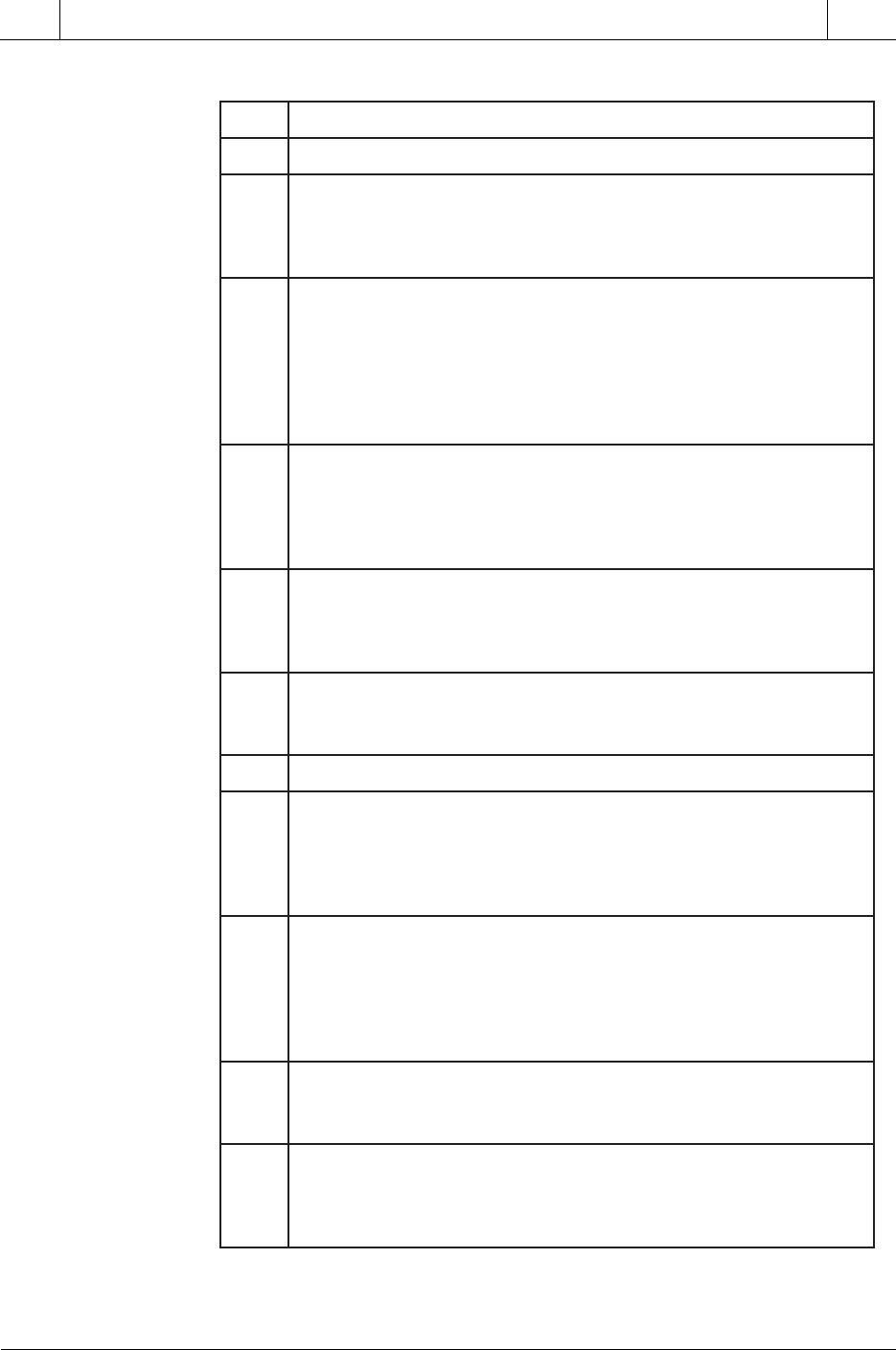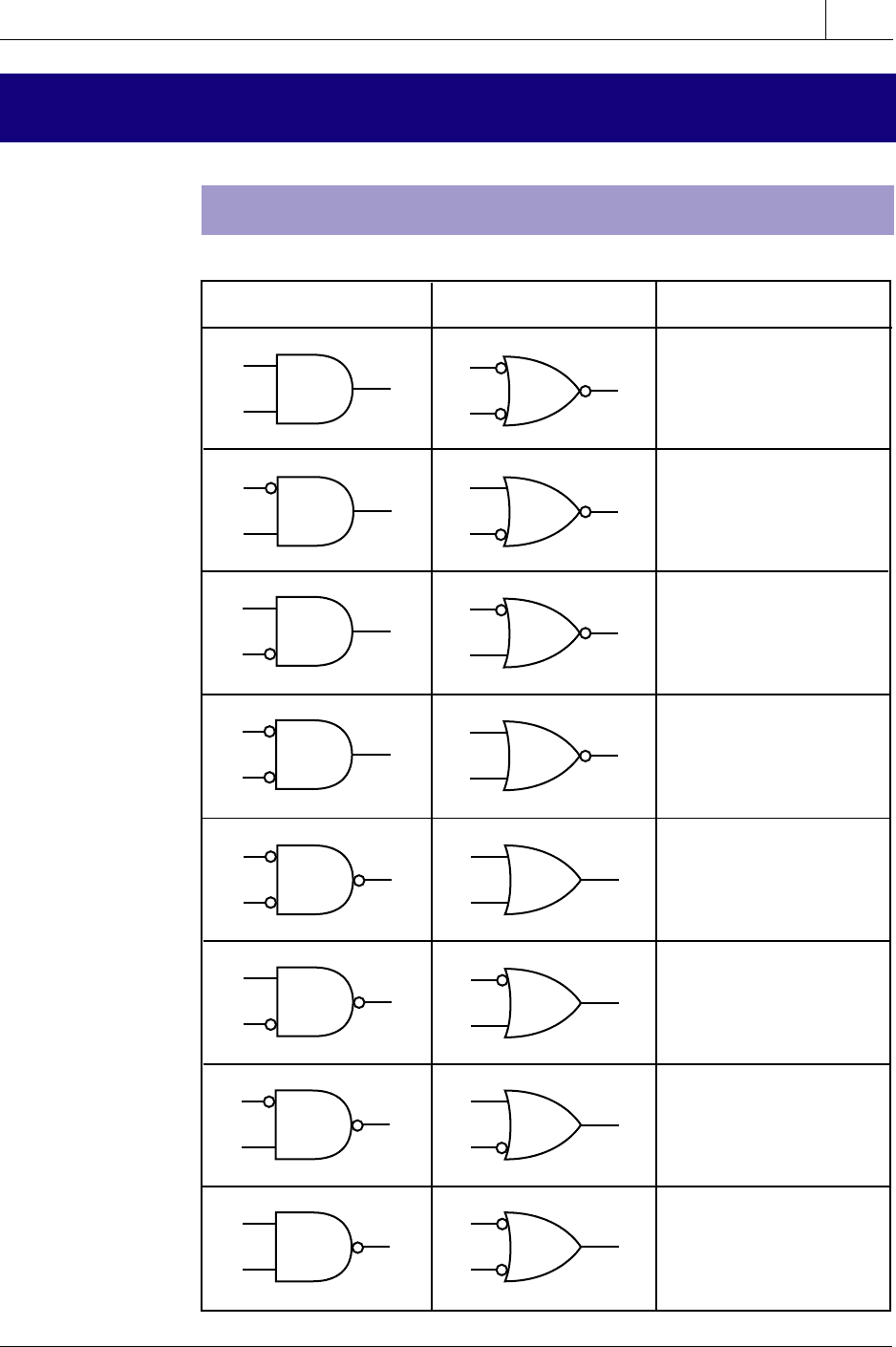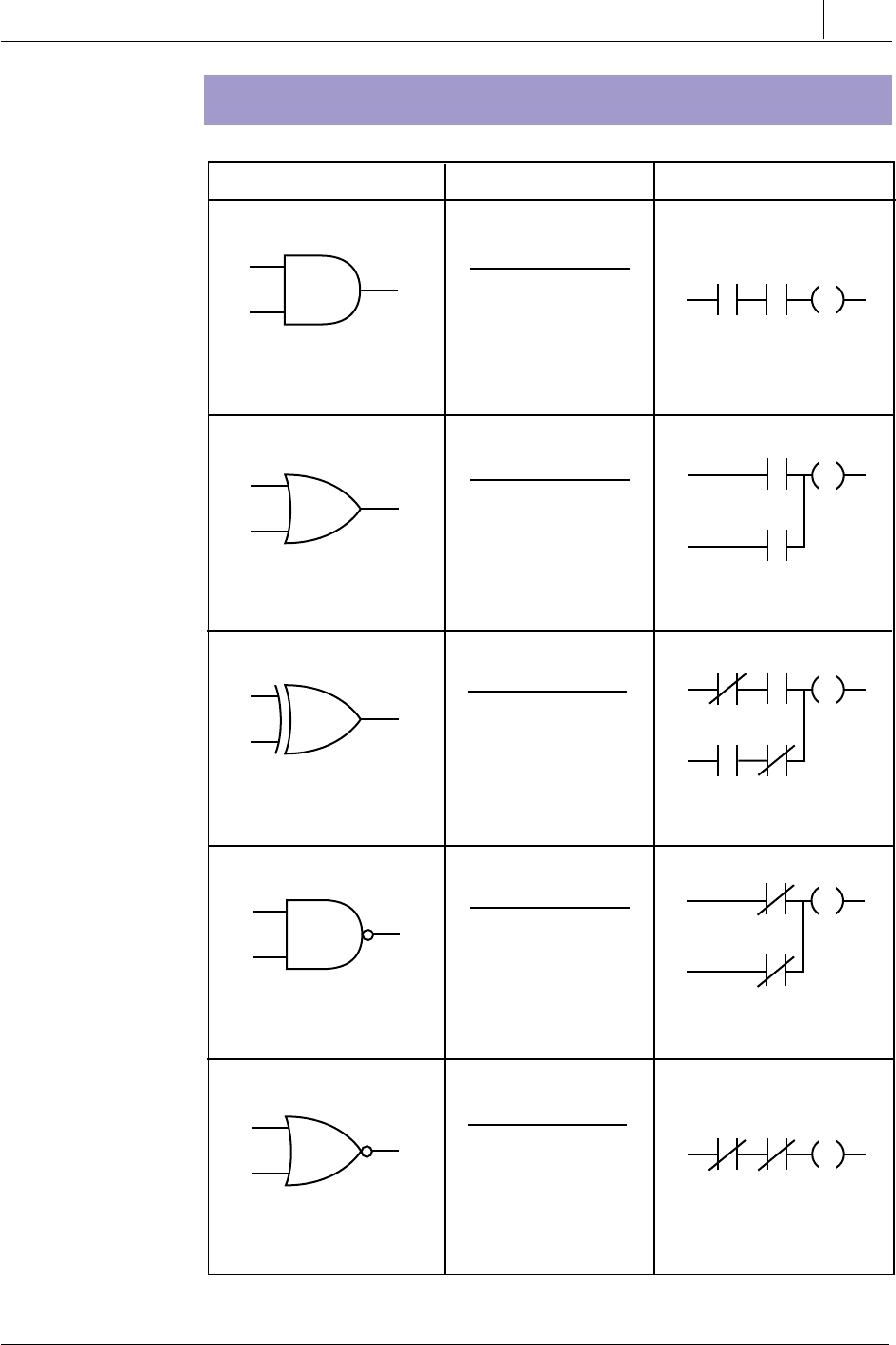Bryan L. Programmable controllers. Theory and implementation
Подождите немного. Документ загружается.


979
CHAPTER
21
System Selection
Guidelines
SECTION
6
Installation
and Start-Up
Industrial Text & Video Company 1-800-752-8398
www.industrialtext.com
Table 21-6 continued.
tsilkcehCerawtfoSsnoitacificepSlacipyT
gnildnaHataD
sretsigerforebmuNhcaestib61,821
sretsigerniezisataDDCB9999dna,76723–,76723+
erapmoC=dna,>,<,seY
snoisrevnoCyranib-DCB,DCB-yraniB
evoMselifelgnisdnasretsigeR
xirtaMDNAN,ROX,RO,DNA
selbaTselbatyranibroIICSAotevoM
DIPspool02,kcolblanoitcnuferawtfoS
OFILseY
OFIFseY
pmuJtceriddnalanoitidnoC
senituorbuSseY
snoitcurtsniIICSAdaerdnatnirp,seY
troSoN
scitsongaidenihcaMseY
egarotSdnagnimmargorP
tsilkcehCeciveD
snoitacificepSlacipyT
retupmoClanosreP
lacisyhP
epytretupmoCpotpaldnapotkseD
ezisyalpsiDneercs"12ot41
scihparGseY
revirdEDDseY
ezisxirtamreddaL01× 3-1311CEIrofgnillorcs,stnemele7
egarotsni-tliuBseY
krowtenaeralacoLseY
noitacinummoCpooltnerrucAm02dnaC232-SR
rewopgnimocnICAV032/511
erutarepmetgnitarepO04–0°C
epytdraobyeKsyekdradnatsroralyM
lanoitcnuF
tnegilletnIseY
nacselgniSoN
wolfrewoPneercsnodeifisnetnitnemele,seY
gnimmargorpenil-ffOseY
noitcnufrotinoMseY
noitcnufyfidoMseY
O/IecroFemarfniamnognicrofsetacidni,seY
hcraeSoN
scinomenMseY
noitatnemucoDeludomerawtfosni-tliuB
remmargorPlaunaM
lacisyhP
epytyalpsiDDELroDCL
ezisxirtamreddaL7×stnemele4

980
SECTION
6
Installation
and Start-Up
Industrial Text & Video Company 1-800-752-8398
www.industrialtext.com
CHAPTER
21
System Selection
Guidelines
Table 21-6 continued.
egarotSdnagnimmargorP
tsilkcehCeciveD
snoitacificepSlacipyT
remmargorPlaunaM
lacisyhP
noitacinummoCC232-SR
rewopgnimocnItinumorF
erutarepmetgnitarepO04–0°C
epytdraobyeK
ralyM
lanoitcnuF
tnegilletnIoN
nacselgniSoN
wolfrewoPseY
noitcnufrotinoMseY
noitcnufyfidoMseY
O/IecroFseY
hcraeSoN
scinomenMsegassemosla,seY
seciveDegarotS
ksidyppolFretupmoclanosrepnI
retupmoCeludomretupmochguorht,seY
eludomyromemcinortcelECLPllamsarof,seY
scitsongaiDmetsyS
tsilkcehC
snoitacificepSlacipyT
ylppuSrewoP
noitcetedssolrewoPselcyc3retfa,seY
noitcetedlevelegatloVUPCrofslevelCD,seY
gnirotinomcitsongaiDylsuounitnoC
yromeM
KOyromeMrotacidniDELdnamuskcehc,seY
KOyrettaBrotacidniDEL,seY
gnirotinomcitsongaiDylnopu-rewoptA
rossecorP
lacoL rotacidniDELdnaremitgodhctaw,seY
etomeRUPCnirotacidni,seY
gnirotinomcitsongaiDylsuounitnoC
noitacinummoC
O/IlacoLseY
O/IetomeRmuskcehc,seY
ecivedgnimmargorPKOC232-SRdnaKOtropTRC
gnirotinomcitsongaiDnoissimsnartgniruD
snoitacidnItluaF
UPCstcatnocyalerlanretxe,seY
etomeR revirdetomertastcatnoclanretxe,seY
NALlioclanretni,seY
O/I eludomO/Ifoecneserpstceted,seY

981
CHAPTER
21
System Selection
Guidelines
SECTION
6
Installation
and Start-Up
Industrial Text & Video Company 1-800-752-8398
www.industrialtext.com
21-4 OTHER CONSIDERATIONS
An evaluation of the previously discussed hardware and software require-
ments will narrow the selection of the PLC down to one of a few possible
candidates. More than likely, two or more products will meet all of the
requirements of the preliminary system design, meaning that a final decision
must still be made. At this point, the user should evaluate a few more factors,
which can lead to the selection of the product that best fits the system
specifications and the application requirements. The user should discuss
these factors with the potential vendors.
PROVEN PRODUCT RELIABILITY
The reliability of the controller plays an important role in overall system
performance. Lack of reliability usually translates into downtime, poor
quality products, and higher scrap levels.
The user can investigate several factors to determine the proven reliability of
a particular product. Mean-time-between-failures (MTBF) studies can be
helpful if the user knows how to evaluate the data. These studies provide
information about the average time between equipment malfunctions and
how long the equipment will operate without a failure. Knowledge of a similar
application in which the product has been successfully applied is also useful.
A sales representative can provide this information and even, on occasion,
arrange a site visit. Moreover, the user should ensure that the vendor can truly
satisfy any unique or peculiar specifications (e.g., EMI and vibration require-
ments). Finally, the user should research the burn-in procedures for the
product (e.g., the total system burn-in process or the parts burn-in process).
The burn-in process involves operating the product at an elevated temperature
to simulate extended operation in order to force an electronic board or part to
fail. If a part passes the burn-in procedure, it will have an extremely high
probability for proper operation. Usually, the vendor can provide MTBF and
burn-in information upon request.
STANDARDIZATION OF PLC EQUIPMENT
A last consideration when making the final decision on a PLC is the
possibility of future plans to standardize machinery—that is, to use only
products from a given manufacturer and product line. Many companies are
adopting this practice for good reasons. Several vendors are creating com-
plete product families of PLCs that cover the entire range of capabilities, thus
making standardization more feasible. Another current trend by manufactur-
ers is to build completely intercompatible product families, with products
ranging from very small to very large PLCs. These families share the same I/O

982
SECTION
6
Installation
and Start-Up
Industrial Text & Video Company 1-800-752-8398
www.industrialtext.com
CHAPTER
21
System Selection
Guidelines
structure, programming device, and elementary instruction set. They also
have similar memory organization and structure. Because of their similari-
ties, these product families can be linked in a network configuration. PLC
families also provide the following important benefits:
• Training on a new PLC family member is a progression of current
knowledge, rather than the development of a totally new set of skills.
• Standardized products can result in better plant maintenance in
emergency situations.
• I/O spares can be used for all family products, resulting in a smaller
spare inventory.
• An outgrown product can be replaced with the next larger product by
simply removing the smaller CPU, installing the larger CPU, and
reloading the old program.
21-5 SUMMARY
This chapter has presented a general approach for selecting a programmable
controller. PLC selection relates not only to obvious factors, such as I/O
capacity, memory capacity, and sophistication of control, but also to intan-
gible factors that have a significant impact on final system results. Selecting
the appropriate PLC for an application is important because the right PLC
can make a process more efficient, more effective, and less expensive. Table
21-7 lists a summary of the major steps involved in selecting a PLC.
burn-in procedures
centralized control
distributed control
individual control
mean-time-between-failures study (MTBF)
KEY
TERMS

983
CHAPTER
21
System Selection
Guidelines
SECTION
6
Installation
and Start-Up
Industrial Text & Video Company 1-800-752-8398
www.industrialtext.com
petSnoitcA
1.dellortnocebotssecorpehtwonK
2.lortnocfoepytehtenimreteD
lortnocdetubirtsiD•
lortnocdezilartneC•
lortnoclaudividnI•
3 .stnemeriuqerecafretniO/IehtenimreteD
stuptuodnastupnigolanadnalatigidforebmuN•
snoitacificepstuptuo/tupnI•
stnemeriuqerO/IetomeR•
stnemeriuqerO/IlaicepS•
snoitacilppakrowtensubO/I•
snalpnoisnapxeerutuF•
4 .snoitcnufdnaegaugnalerawtfosehtenimreteD
levelhgihro/dna,naelooB,reddaL•
).cte,sretnuoc,sremit(snoitcurtsnicisaB•
).cte,DIP,htam(snoitcnuf/snoitcurtsnidecnahnE•
egaugnal3-1311CEI•
5.yromemfoepytehtredisnoC
)W/R(elitaloV•
).cte,MORPE,MORPEE(elitalovnoN•
elitalovnondnaelitalovfonoitanibmoC•
6.yticapacyromemredisnoC
noitcurtsnirepegasuyromemnodesabstnemeriuqeryromeM•
noisnapxeerutufdnagnimmargorpxelpmocrofyromemartxE•
7 .stnemeriuqeremitnacsrossecorpetaulavE
8 .stnemeriuqerecivedegarotsdnagnimmargorpenifeD
retupmoclanosreP•
egarotsksiD•
remmargorplaunaM•
ecivedgnimmargorpehtfoseitilibapaclanoitcnuF•
9.stnemeriuqerlarehpirepenifeD
yalpsidcihparG•
ecafretnirotarepO•
sretnirpeniL•
metsysnoitatnemucoD•
metsysnoitarenegtropeR•
01 .stniartsnoclatnemnorivnednalacisyhpynaenimreteD
metsysrofecapselbaliavA•
snoitidnoctneibmA•
11 .noitcelestceffayamtahtsrotcafrehtoetaulavE
troppusrodneV•
ytilibailertcudorpnevorP•
noitazidradnatsrofslaogtnalP•
Table 21-7. Steps for selecting a PLC.
Industrial Text & Video Company 1-800-752-8398
www.industrialtext.com
This page intentionally left blank.

• Logic Symbols, Truth Tables, and
Equivalent Ladder/Logic Diagrams
• ASCII Reference
• Electrical Relay Diagram Symbols
• P&ID Symbols
• Equation of a Line and Number
Tables
• Abbreviations and Acronyms
• Voltage-Current Laplace Transfer
Function Relationships
APPENDICES
Industrial Text & Video Company 1-800-752-8398
www.industrialtext.com
Industrial Text & Video Company 1-800-752-8398
www.industrialtext.com
This page intentionally left blank.

987
APPENDIX
A
Logic Symbols, Truth Tables,
and Equivalent Ladder/Logic Diagrams
Industrial Text & Video Company 1-800-752-8398
www.industrialtext.com
APPENDIX A: LOGIC SYMBOLS, TRUTH TABLES, AND
EQUIVALENT LADDER/LOGIC DIAGRAMS
LOGIC SYMBOLS AND TRUTH TABLES
AND OR
ABY
111
100
010
000
110
100
011
000
110
101
010
000
110
100
010
001
111
101
011
000
111
100
011
001
111
101
010
001
110
101
011
001
A
B
Y
A
B
Y
A
B
Y
A
B
Y
A
B
Y
A
B
Y
A
B
Y
A
B
Y
A
B
Y
A
B
Y
A
B
Y
A
B
Y
A
B
Y
A
B
Y
A
B
Y
A
B
Y

988
APPENDIX
A
Logic Symbols, Truth Tables,
and Equivalent Ladder/Logic Diagrams
Industrial Text & Video Company 1-800-752-8398
www.industrialtext.com
EQUIVALENT LADDER/LOGIC DIAGRAMS
Logic Diagram Ladder Diagram
ABC
000
011
101
110
ABC
001
011
101
110
ABC
001
010
100
110
Truth Table
ABC
000
011
101
111
ABC
000
010
100
111
AND
Gate
OR
Gate
Exclusive-OR
Gate
NAND
Gate
NOR
Gate
AND
Equivalent Circuit
OR
Equivalent Circuit
Exclusive-OR
Equivalent Circuit
NAND
Equivalent Circuit
NOR
Equivalent Circuit
A
B
C
A
B
C
A
B
C
A
B
C
A
B
C
ABC
A
B
C
AB
B
A
C
A
B
C
ABC
